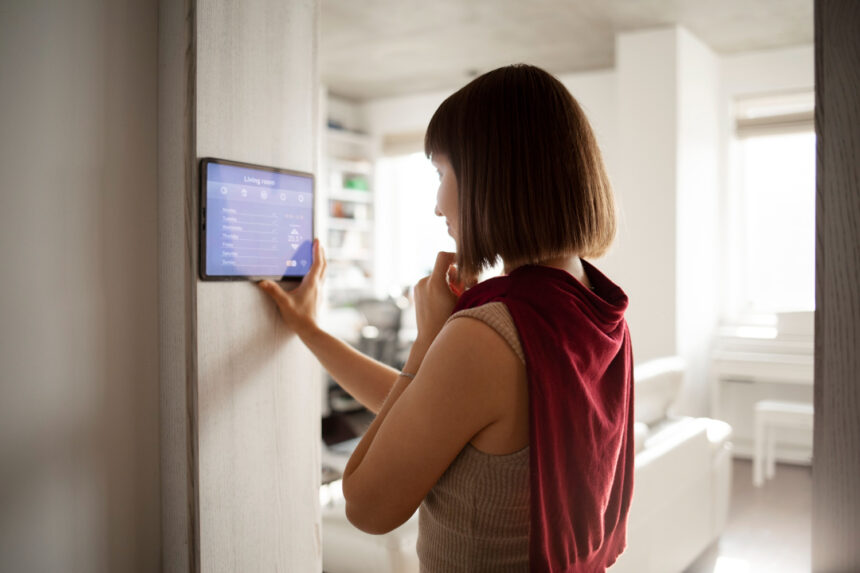Home alarm systems serve as a vital component of modern home security. They help protect homes from intrusions by providing alerts and monitoring features that keep families safe. With various options available, it’s essential to understand how these systems work and what to look for when choosing one.
Selecting the right home alarm system involves assessing personal needs, monitoring features, and ease of installation. Many systems now offer smart technology that integrates with other home devices, allowing for comprehensive control and monitoring. Maintenance is also crucial to ensure the system functions effectively and provides the level of security desired.
By knowing the basics of home alarm systems, individuals can make informed decisions to protect their homes better. Understanding the key features, installation process, and ways to enhance security will lead to a safer living environment.
Key Takeaways
- Home alarm systems provide essential alerts and monitoring for safety.
- Choosing the right system depends on individual needs and technology features.
- Regular maintenance ensures effective functioning of security systems.
Understanding Home Alarm Systems
Home alarm systems are designed to protect property and provide peace of mind. These systems come in various types, with different components and operational methods. Knowing the differences can help in choosing the right system.
Types of Alarm Systems
There are several types of home alarm systems.
- Monitored Systems: These systems are linked to a professional monitoring service. If an alarm is triggered, the service alerts authorities.
- Unmonitored Systems: These rely on loud alarms to deter intruders and alert residents.
- Smart Systems: These utilize smart technology and connect to mobile devices, allowing users to monitor their homes remotely.
- Wired Systems: These are hardwired into the home and may provide a stable connection but can be more challenging to install.
- Wireless Systems: These use radio signals to communicate. They are easier to install and often more flexible.
Components of a Standard System
A typical home alarm system includes various components working together to ensure safety.
- Control Panel: This is the main hub that connects all devices. It allows users to arm or disarm the system.
- Sensors: These can include door/window sensors and motion detectors. They detect unauthorized entry and trigger alerts.
- Security Cameras: These can monitor live video feeds and record footage. They are essential for visual verification during alarms.
- Alarms/Sirens: These devices sound when a security breach is detected. Their loud noise serves to scare off intruders.
These components create a network that enhances home safety.
Wired vs. Wireless Systems
Wired and wireless systems have unique advantages and drawbacks.
Wired Systems:
- Often more reliable as they do not rely on battery power.
- Can be more difficult to install, requiring professional help.
- Generally have a lower risk of interference from other devices.
Wireless Systems:
- Easier and quicker to install since they don’t require extensive wiring.
- Allow for flexibility in adding or moving devices.
- Require battery maintenance, which can lead to issues if batteries die unexpectedly.
Both types can provide effective home security, depending on user needs and preferences.
Choosing the Right Alarm System
Selecting the best alarm system involves understanding specific security needs, comparing various providers, and considering unique situations such as pet ownership. Each factor plays a vital role in finding a system that fits well with personal requirements and lifestyle.
Assessing Your Security Needs
Before choosing an alarm system, it is essential to determine the level of protection needed. This can vary based on the home size and location.
Key Factors to Consider:
- Home Size: Larger homes may require more sensors and coverage.
- Entry Points: Count doors and windows to assess vulnerable spots.
- Neighborhood Safety: Understand local crime rates to gauge risk levels.
Also, consider whether additional features like surveillance cameras or smart home integration are necessary. This helps in tailoring a system to meet specific security requirements.
Comparing Alarm Providers and Packages
Different alarm providers offer various packages with unique features. It can be helpful to compare several options to find the right fit.
Popular Alarm Providers:
- SimpliSafe: Known for easy installation and user-friendly features.
- Ring: Offers excellent customer support and a range of smart home devices.
- Vivint: Provides comprehensive smart home solutions but at a higher price.
When comparing packages, look for elements like equipment cost, monitoring fees, and contract terms. Some systems may include extra features, such as mobile alerts, which add more value depending on the user’s preferences.
Considerations for Pet Owners
Having pets can influence the choice of an alarm system. Pets can trigger motion detectors, leading to false alarms.
Recommendations for Pet Owners:
- Pet-Friendly Sensors: Some systems offer sensors that can differentiate between pets and humans.
- Placement: Positioning motion detectors higher up may reduce accidental triggers from pets.
- Testing the System: Regularly test the alarm system to ensure it functions correctly without nuisance alarms.
Understanding these factors can assist pet owners in selecting an alarm system that is both effective and responsive to their unique home environment.
Installation and Maintenance
Installing and maintaining a home alarm system is essential for security. Proper installation ensures the system works effectively, while regular maintenance keeps it running smoothly. Understanding the differences between professional and DIY installation, as well as maintenance tips, is vital for homeowners.
Professional vs. DIY Installation
Professional installation offers several advantages. Experts ensure that security systems are set up correctly, covering all entry points. They can also customize the system based on the home’s layout.
However, DIY installation can be a cost-effective option. Many systems come with clear instructions and user-friendly interfaces. Homeowners can save money on installation fees and gain personal satisfaction from setting it up themselves.
It’s essential to consider skill level and comfort with technology before choosing. For more complex systems, professionals might be the best choice to avoid mistakes that could compromise security.
Regular Maintenance Tips
Regular maintenance is crucial for keeping a home alarm system functioning. Homeowners should perform a monthly check of components. They can inspect sensors, replace batteries, and ensure that all devices are clean.
It’s important to test the system’s functionality regularly. This can include running the test mode on the control panel to identify issues. Homeowners should also keep in touch with customer service for guidance.
Setting reminders for these tasks can help ensure they don’t get overlooked. A well-maintained system provides peace of mind and can prevent costly repairs in the future.
Troubleshooting Common Issues
Common issues with alarm systems can occur, but many can be solved quickly. If an alarm fails to activate, checking the power source is the first step.
If sensors are not responding, cleaning them to remove dust and debris might resolve the issue. Homeowners should also check for obstructions that could block signals.
When alarms trigger unexpectedly, checking for environmental factors like pets or insects is necessary. If problems persist, consulting the user manual or contacting customer support can provide additional solutions. Quick troubleshooting can restore the system’s reliability.
Enhancing Your Home Security
A well-rounded home security strategy incorporates technology and practical measures. Effective enhancements can provide greater peace of mind and deter potential threats.
Smart Home Integration
Smart home technology offers various ways to strengthen security. Homeowners can integrate devices like security cameras, motion detectors, and smart locks into a single system. This allows for real-time monitoring and automation.
- Smart Cameras: These devices can stream video to smartphones. They often include night vision, motion alerts, and two-way audio.
- Smart Locks: Homeowners can control entry points remotely. Keyless entry lets them grant access to guests without needing physical keys.
- Automated Lighting: Setting lights on timers or using motion sensors improves security. They can discourage intruders by making the home appear occupied.
The integration of these devices creates a cohesive security network, significantly enhancing overall safety.
Additional Safety Measures
Beyond technology, practical steps can improve home safety. Simple actions taken daily can deter crime and protect loved ones.
- Secure Windows and Doors: Reinforce entry points with deadbolts and window locks. This basic security step is crucial.
- Outdoor Lighting: Bright lighting around the home makes it harder for intruders to stay unnoticed. Motion-activated lights work well.
- Neighborhood Watch: Residents can participate in community safety programs. This fosters vigilance and strengthens ties among neighbors.
- Fire Safety: Installing smoke detectors and carbon monoxide alarms is vital. Regularly check batteries to ensure they work.
Combining these measures with smart technology creates a comprehensive approach to home safety.






